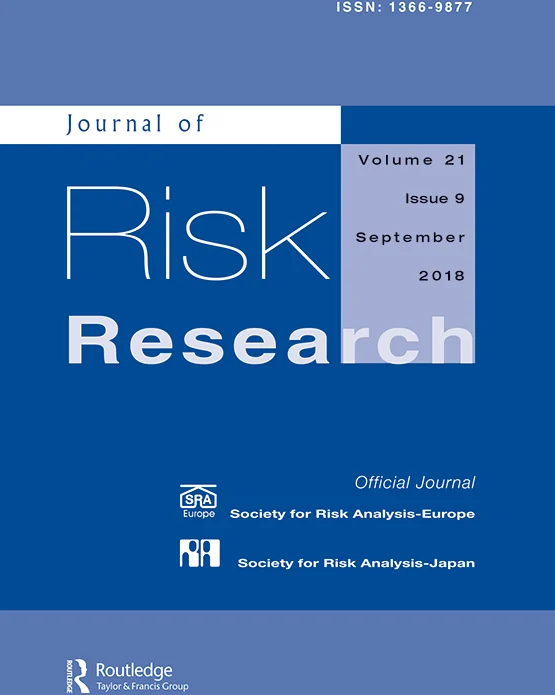瑞士SARS-CoV-2大流行期间戴口罩的驱动因素和障碍
IF 2.4
4区 管理学
Q1 SOCIAL SCIENCES, INTERDISCIPLINARY
引用次数: 6
摘要
在无法保持社交距离的情况下,鼓励人们佩戴口罩是一种相对低成本、低影响的保护措施,可以保护人们免受SARS-CoV-2感染。因此,本研究调查了人们在强制性和非强制性情况下自我报告佩戴防护口罩的各种障碍和驱动因素。数据来自瑞士的四波纵向研究(N = 728)。调查结果显示,在疫情期间,特别是在解除封锁措施后,遵守“戴口罩”的情况有所增加。更重要的是,研究表明,戴口罩的感知有效性是重要的驱动因素,而各种感知成本(如经济、舒适)则是障碍。风险传播者应该意识到,沟通的有效性(自己或他人)与人们在公共场合佩戴口罩的意愿有关,而与所涉及的成本和感知成本无关,也与佩戴口罩是否是强制性的无关。本文的补充数据可在https://doi.org/10.1080/13669877.2022.2038244上在线获得。本文章由计算机程序翻译,如有差异,请以英文原文为准。
The drivers and barriers of wearing a facemask during the SARS-CoV-2 pandemic in Switzerland
Abstract Encouraging people to wear a facemask in situations where social distance is not possible is a relatively low-cost and low-impact measure to protect people from infections with SARS-CoV-2. Thus, the present study investigated various barriers and drivers regarding people’s self-reported wearing of protective facemasks in mandatory and non-mandatory situations. Data from a longitudinal study with four waves in Switzerland was used (N = 728). The findings show that the compliance with “wearing a facemask” increased over the duration of the pandemic, particularly after the lockdown measures were lifted. More importantly, the study shows that perceived effectiveness of wearing a facemask are important drivers, while various perceived costs (e.g., financial, comfort) act as barriers. Risk communicators should be aware that the communicated effectiveness (self or others) is associated with people’s willingness to wear facemasks in public, independently of the involved and perceived costs or whether wearing a facemask is mandatory or not. Supplemental data for this article is available online at https://doi.org/10.1080/13669877.2022.2038244 .
求助全文
通过发布文献求助,成功后即可免费获取论文全文。
去求助
来源期刊

Journal of Risk Research
SOCIAL SCIENCES, INTERDISCIPLINARY-
CiteScore
12.20
自引率
5.90%
发文量
44
期刊介绍:
The Journal of Risk Research is an international journal that publishes peer-reviewed theoretical and empirical research articles within the risk field from the areas of social, physical and health sciences and engineering, as well as articles related to decision making, regulation and policy issues in all disciplines. Articles will be published in English. The main aims of the Journal of Risk Research are to stimulate intellectual debate, to promote better risk management practices and to contribute to the development of risk management methodologies. Journal of Risk Research is the official journal of the Society for Risk Analysis Europe and the Society for Risk Analysis Japan.
 求助内容:
求助内容: 应助结果提醒方式:
应助结果提醒方式:


